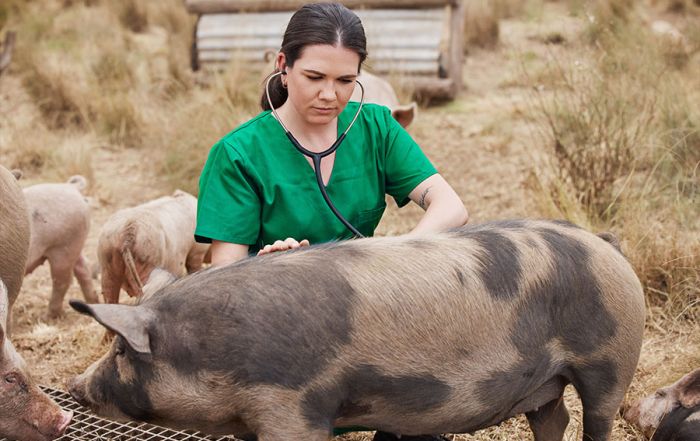Sanitation, Sanitation, Where Art Thou?
Continuing the theme I picked up on a few months ago, discussing common causes of foodborne illness, I’d like to focus this blog on cross contamination, more precisely sanitation. Sanitation is another issue that employees don’t often do at home, so they discount the importance of it in the food production environment. That is to say that they have never made someone sick at home because they only clean their countertops and they have likely never sanitized their kitchen, so why is it so important in a foodservice facility?
If you want to see how seriously your employees take sanitation, look no further than the first thing they do when they start production in the morning. Do employees start food production upon first arriving in the morning or do they take time to sanitize all the work surfaces before starting production? This may seem like an unnecessary step, especially in operations where there may only be one production shift, like in a school system. However, you can never really be too sure of what occurred during the evening when no one was using the space. Was a maintenance person working in the area with their work bag on the table? Did an after-hours delivery drive place boxes that were sitting outside on the ground on the preparation table? Did a rodent or cockroach (although we hate to think of this – it does happen) run across the table in the wee hours of the morning? Or perhaps the staff the day before didn’t really sanitize as well as they had thought they did.
If you want to see how seriously your employees take sanitation, look no further than the first thing they do when they start production in the morning…do they take time to sanitize all the work surfaces before starting production?
Often, our employees like to show off their clean kitchens, and certainly a clean kitchen is something to be proud of. Afterall, it cannot be sanitized if it is not first clean. However, we must be sure to educate our employees that we cannot stop at clean. We must be mindful to sanitize property and avoid cross contamination. A few years ago, we placed a camera in a school to watch sanitation practices and were surprised as what we found at the end of the day. We’ve released the video and use it in training to help employees understand the importance of cleaning vs. sanitizing and have made it available online free of charge.
Be certain your employees are also aware of the sanitizer you use in your facility –on surfaces and within the three-compartment sink and/or dishwasher. They need to know what product to use, but also the specifics about the product – how to mix it, proper strength, the amount of contact time for it to be effective, and how to properly utilize test strips to ensure that the concentration is correct.
Once you are sure your employees are knowledgeable about your sanitizers, the tricky part is ensuring that they use them when they are supposed to do so. This is again where that culture of food safety comes into play. As a manager, you cannot be everywhere all the time, so you must have a supportive environment where employees are able to remind other employees to properly sanitize surfaces or equipment when they see that it has not been done correctly. Allowing all employees to hold each other accountable in a supportive environment will go a long way to not only providing the safe food culture, but also ensuring guest satisfaction and safety throughout your organization.
Late last week, we released our second SafeBites Webinar of 2022. In the webinar, Dr. Ellen Shumaker, who directs the outreach and extension activities for the Safe Plates program at North Carolina State University, discusses food safety messaging and the role of food safety culture in shaping employee and organizational behaviors. This is the second release of our new on-demand webinar, please drop me a note and let me know if you enjoy the new format or not. Risk Nothing.
The Antibiotic Debate in Our Food Chain
The discovery of antibiotics in medical science is regarded as one of the most important medical [...]
Exposing the Risks of Raw Milk
When I began my career in the food safety area several years ago, I never dreamed [...]
Navigating the Latest Listeria Outbreak
I am starting to feel like a member of the Bad News Bears, the guy that [...]
Enhancing Safety and Adding Flavor: The Role of Additives in your Food Supply
Last week, I ran across a post on Facebook from a childhood friend denouncing additives in [...]









